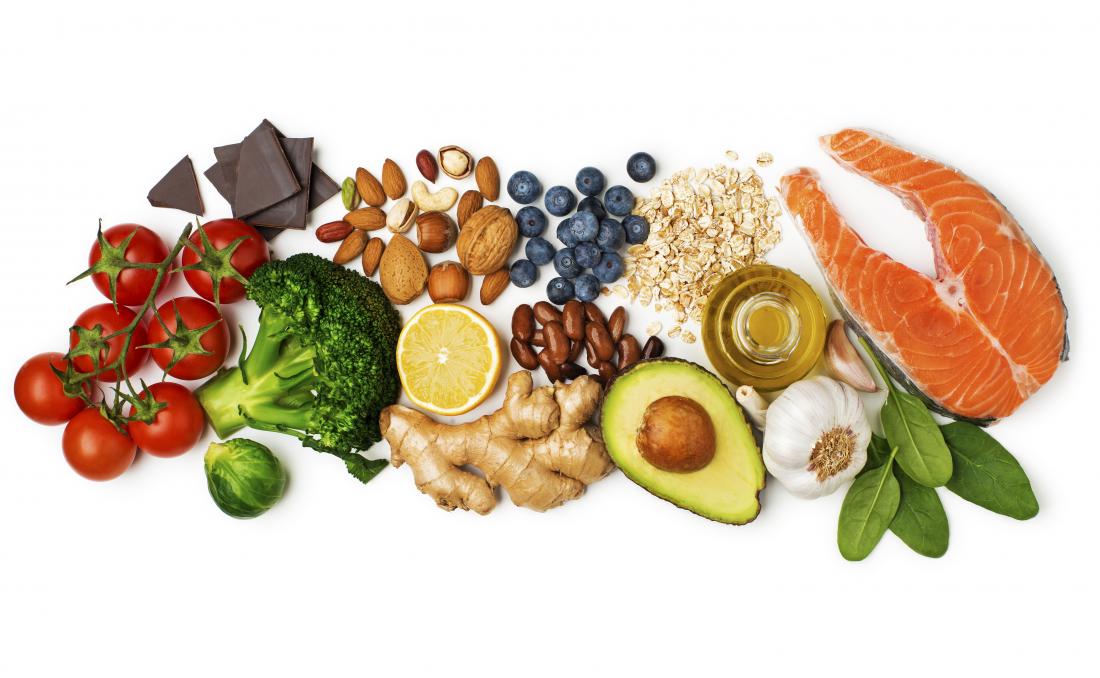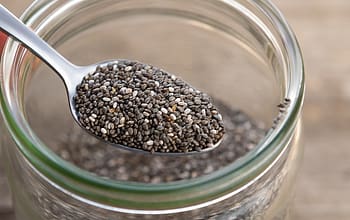Growth in Demand for Health Foods Boosts Market Growth amidst COVID-19 Pandemic
Since consumers have become conscious about their health amidst the coronavirus (COVID-19) pandemic, companies in the medical foods market are increasing efforts to market their products that assure immunity boost. Since several medical foods are commercially available, it has become easier for manufacturers to promote their products through advertisements. On the other hand, analysts at Transparency Market Research opine that China’s import and export of health foods will remain constant in the upcoming months.
The China Chamber of Commerce for Import & Export of Medicines & Health Products (CCCMHPIE) claims that the demand for medical foods is expected to register a slight growth in 2020. However, insufficiency in raw materials might temporarily affect supply chains in China. Manufacturers are hoping for the COVID-19 pandemic to subside so that global supply chains resume at a normal pace and the medical foods market can grow.
Innovative Protein Substitutes Gain High Demand in Pediatrics Domain
The high prevalence of patients with metabolic disorders in the U.K. has become a growing concern for medical insurance companies due to a rise in insurance claims. Hence, companies in the medical foods market such as leading pharmaceutical company Galen announced the launch of PKU EASY Microtabs for patients with metabolic disorders in February 2020. Such product offerings are bolstering the growth of the medical foods market, which is estimated to reach a value of ~US$ 33.3 Bn by 2030.
The revenue of metabolic disorders is projected for exponential growth in the market for medical foods. Hence, pharmaceutical companies are introducing palatable alternatives to conventional protein substitutes available in the market. These innovative protein substitutes are targeting children aged eight and above in order to manage incurable medical conditions such as phenylketonuria. Since a high number of babies every year are born with inherited metabolic disorders, companies are increasing their focus to innovate new protein substitutes.
Companies Target Nutritionally Complete Medical Foods to Prevent Malnutrition in Individuals
Apart from metabolic disorders, companies in the medical foods market such as the producer of functional nutrition solutions SternLife, are acquiring the proficiency to produce supplementary medical foods for the prevention of malnutrition. The demand for nutritionally complete medical foods is surging in patients suffering from malnutrition. As such, companies in the medical foods market are increasing their production capabilities in bars, powders, and thickening agents. This is evident since the revenue of powdered products is expected to register aggressive growth in the market for medical foods.
Emerging pharmaceutical companies are collaborating with key market players to help the latter expand their private label clinical nutrition offerings. They are increasing efforts to provide full-service assistance by gaining efficacy in the formulation of medical food supplements.
Companies Invest in Innovation Centers Aiming to Introduce Locally Manufactured Products
The leading company Nestlé Health Science is advancing in the domain of nutritional therapy and has announced to invest in a product innovation center in the Taizhou, Jiangsu province of China, to tap into opportunities in the clinical nutrition sector. This explains why the revenue of Asia Pacific is predicted to take an aggressive leap in the medical foods market. As such, innovation centers in China are collaborating with clinical nutrition centers of the U.S. in order to advance in core R&D technologies.
Companies in the medical foods market are innovating to develop localized product offerings that resonate with China’s national standards and consumer needs. They are increasing efforts to comply with regulations involved with Foods for Special Medical Purposes (FSMPs) in China. As such, companies are capitalizing on the growing demand for locally manufactured products, whilst high approval rates for infant and baby formula products are generating incremental opportunities for companies in China.
Post Market Enforcement Tools Help Increase Availability of Quality Products
The medical foods market is slated to progress at a robust CAGR of ~6% during the forecast period. However, stringent regulations regarding medical foods such as prevention of adulteration and compliance with Current Good Manufacturing Practice (CGMP) regulations are posing as a barrier for product approvals. Hence, companies in the medical foods market are increasing efforts to refer to published guidelines issued by the FDA (Food and Drug Association) that highlight some of the frequently asked questions of manufacturers. Such FAQs and other guidelines are helping manufacturers to gain a better understanding of regulations.
Since the FDA uses tools such as adverse event report monitoring for post-market enforcement, consumers can be assured of quality product consumption. Hence, manufacturers are adopting post-market enforcement strategies in order to comply with food safety regulations.
Leniency by FDA for Health Claims to Boost Uptake of Products
Microbes and medical foods are gaining commercial importance in the global market landscape. Companies in the medical foods market are increasing their R&D muscle to develop products that meet the requirements of the FDA such as products intended for oral intake or administered enterally. They are innovating in products that cater to distinctive nutritional requirements and are based on recognized scientific principles in order to boost uptake of products. Other opportunities such as leniency by the FDA for health claims in products are helping manufacturers to effectively market their products.
Companies are getting involved in careful planning activities to adequately substantiate the health claims in products. On the other hand, manufacturers are increasing their production capabilities to introduce modified carbohydrate and fat enteral formula that is designed for people with chronic obstructive pulmonary disease (COPD), cystic fibrosis, or respiratory failure.
Medical Foods Market: Overview
- According to the latest report published by Transparency Market Research on the global medical foods market for the historical period, 2018–2019and forecast period from 2020 to 2030, high demand for medical food products is projected to be a major driver of the global medical foods market during the forecast period
- The global medical foods market was valued at US$ 18 Benin 2019 and is anticipated to expand at a CAGR of ~6% from 2020 to 2030
- The report analyzes the current and future scenario of the global medical foods market
- The global medical foods market report comprises an elaborate executive summary, which includes a snapshot that provides information about various segments of the market. It also provides information and data analysis of the global medical foods market with respect to the segments based on product type, application, distribution channel, and region.
- A detailed qualitative analysis of drivers, restraints, and opportunities of the global medical foods market has been provided in the overview section. Additionally, the section comprises competitive matrix and company profiles, along with a business overview to understand the competition landscape of the global medical foods market.
- This section of the report also provides market attractiveness analysis by region and market share analysis by key players, thereby presenting a thorough analysis of the overall competitive scenario in the global medical foods market
Medical Foods Market: Key Drivers
- Providing adequate nutritional support is a central component for the care of prolonged or chronically ill patients. Hence, demand for clinical nutrition is constantly increasing among patients with chronic disorders such as gastrointestinal disorders, short bowel syndrome, ischemic bowel disease, Crohn’s disease, and renal failure. The rise in the prevalence of these diseases drives the demand for medical foods.
- Statistics from various government organizations indicate that the incidence of chronic diseases such as gastrointestinal disorders and chronic kidney diseases is increasing rapidly
- For instance, the incidence of inflammatory bowel diseases such as Crohn’s disease and ulcerative colitis is rising. This drives the demand for medical food products across the globe. As per the statistics provided by the Crohn’s & Colitis Foundation of America, around 6 million people in the U.S. have Crohn’s disease or ulcerative colitis. The organization also stated that more than70,000 new cases are diagnosed with Crohn’s disease and ulcerative colitis in the U.S. each year.
- Moreover, the National Kidney Foundation stated that around 10%of the world’s population is affected by chronic kidney disease each year. The Centers for Disease Control and Prevention also noted that more than 20 million people in the U.S. have chronic kidney disease each year.
- Hence, the factors and statistics mentioned above indicate that increase in the incidence of various chronic disorders is likely to fuel the growth of the global medical foods market
Medical Foods Market: Key Segments
- In terms of product type, the global medical foods market has been classified into pills, powder, liquids, and others
- Based on application, the global medical foods market has been categorized into diabetes, cancer, neurological & psychological disorders, metabolic disorder, pain management, gastrointestinal disorders, ophthalmology, and others
- Based on distribution channel, the global medical foods market has been categorized into pharmacies & drug stores, online channels, supermarkets & hypermarkets, and others
- The market size and forecast for each of the segments have been provided in terms of US$ Mn from 2018to 2030, along with their respective CAGRs for the forecast period from 2020 to 2030, considering 2018 as the base year
Medical Foods Market: Regional Outlook
- Geographically, the global medical foods market has been segmented into four major regions: North America (the U.S. and Canada), Europe (the U.K., Germany, France, Spain, Italy, and Rest of Europe), Asia Pacific (China, India, Japan, Australia & New Zealand, and Rest of the Asia Pacific), Latin America (Brazil, Mexico, and Rest of Latin America), and Middle East & Africa (GCC Countries, South Africa, and Rest of the Middle East & Africa)
- The market size and forecast for each of these regions and the mentioned countries/sub-regions have been provided for the period from 2018 to 2030, along with their respective CAGRs for the forecast period from 2020 to2030, considering 2018 as the base year. The research study also covers the competitive scenario in these regions.
Companies Mentioned in Report
- The report also profiles the following major players in the global medical foods market based on various attributes such as company overview, financial overview, product types, business strategies, and recent developments.
SOURCE: https://www.transparencymarketresearch.com/medical-foods-market.html



